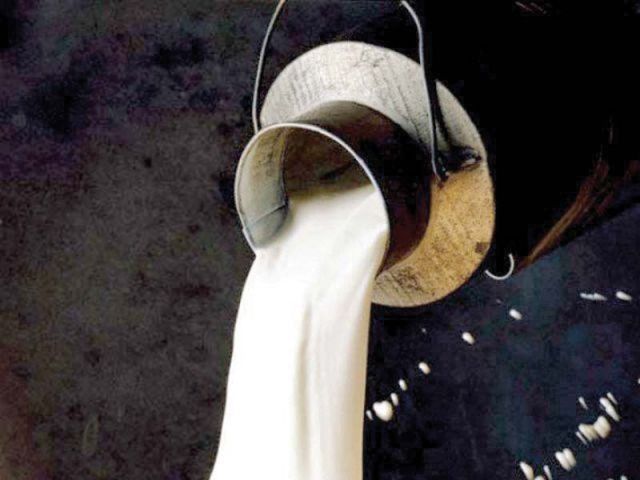A huge public debate about milk quality has been raging in recent months. A lot of confusion and doubts spread through the mass media and the social media with misleading, speculative and irresponsible commentary. To clear the confusion, public awareness of 10 key facts about milk is vital.A huge public debate about milk quality has been raging in recent months. A lot of confusion and doubts spread through the mass media and the social media with misleading, speculative and irresponsible commentary. To clear the confusion, public awareness of 10 key facts about milk is vital.
Fact 1: The very first food a new-born consumes is mother’s milk. This is how the Creation intended it to be. Milk is designed by nature to be the complete and the ideal food.
Fact 2: Cow’s milk typically comprises about 87.7 per cent water, 4.9 per cent lactose (carbohydrate), 3 to 4 per cent fat, 3.3 per cent protein, and 0.7 per cent minerals. The composition varies depending on the breed of the cow, the animal’s feed, the stage of lactation and other factors. Buffalo milk contains all the nutrients in higher proportions than cow milk, with fat content on average being twice as high as in cow milk. Health professionals therefore recommend modified dosages of these milk nutrients for human consumption.
Fact 3: Milk is a valuable nutritious food that contains fat, lactose (carbohydrates), protein, water soluble vitamins B1, B2, B3, B5, B6, B12, vitamin C and folate, and the fat soluble vitamins A, D, E, and K. It is also a good source of calcium, magnesium, phosphorus, potassium, selenium, and zinc, and small amounts of copper, iron, manganese, and sodium. Minerals have many roles in the body including enzyme functions, bone formation, water balance maintenance, and oxygen transport.
Fact 4: It is misleading to say that packaged milk does not contain fat. As per Pakistan Standards and Quality Control Authority PS 5344:2016 where UHT processed milk is legislated, UHT treated packaged milk must contains the minimum of 3.5% fat, unless a special low-fat variant is being offered. The cream layer on top of UHT treated milk does not form simply because UHT treated milk is homogenized – a process that breaks down the fat molecules in the milk in a way that the fat content of milk gets equally distributed in each and every drop of milk in the carton. Therefore, when homogenized milk is boiled the fat does not separate and rise to the top as cream layer, as it does in the case of loose milk.
Fact 5: Milk is a highly perishable food item that quickly loses freshness and expires, unless it is kept cool at less than four degrees Centigrade or processed under hygienic conditions. To prevent this from happening, gawalas or middlemen put ice of questionable quality to keep the milk cool during the period they procure it from milk farmers and deliver it to milk consumers. They also adulterate the milk with a variety of substances – starch, flour, urea, vegetable oil, etc. – many of which are harmful and even toxic.
However, milk processing companies like Haleeb have established what are referred to as ‘cold chains’, eliminating the middleman by collecting milk directly from registered farmers, test it for impurities and toxins (total 30 different tests) and then immediately cool it in chillers, before transporting it to the processing plant in special tankers that maintain the required low temperature in transit.
Comparisons between the gawala and milk processor’s value chain are akin to transporting an infant in a car without appropriate seat belts or a driver’s license!
Fact 6: UHT processed milk is safe and nutritious, owing to the high quality European technology used and the strict quality controls exercised. Haleeb and many other dairy processors take raw milk directly from registered farmers, conducting at least seven different quality tests at collection points and rejecting any raw milk failing any test. Further comprehensive testing takes place at the main centers and then at Plant (30 tests) before its aseptic processing, (aseptic, definition: free from contamination) that includes pasteurization, homogenization and UHT (Ultra High Temperature) treatment, and finally to its aseptic packaging. All this investment, effort and technology is just for one purpose – to ensure that the milk which reaches consumers is safe, healthy, nutritious and free from contaminants and harmful substances.
Fact 7: There is absolutely no need and no economic sense at all for milk processors who market milk in sterilized Tetra Pak cartons, to add anything to the milk bought from registered farmers. And why processors do not have to add any preservatives is simply because they have established technology based procedures from the very first step (milk collection) to the very last step, which ensure the high quality and nutritional value of the milk without addition of any preservatives. UHT milk processing is a common processing technique globally used in over 170 countries since 1970.
Fact 8: The quality of milk (like of any food item) deteriorates if the milk is exposed to any one of three things – sunlight, moisture and air. Milk in glass or plastic bottles for instance, even if aseptically sealed, will deteriorate in a few days because the aseptic sealing may deter moisture and air but it will not stop light. Thus milk in such packaging must be kept refrigerated and consumed in a few days at best. Unlike the glass or plastic bottle, UHT carton packaging has proven to be formidable against all three contamination risks in milk.
Fact 9: Boiling milk at home kills about 50 to 70 percent bacteria, because at home the cooker temperature averages only between 70 and 100 degrees centigrade typically. Another issue of boiling milk at home is that it destroys vital nutrients. On the other hand, in the UHT process, the milk is very rapidly heated to a temperature exceeding 137 degrees centigrade and kept at this temperature for less than just 4 seconds, before it is rapidly cooled back for further processing. The UHT treatment eliminates harmful bacteria, while preserving the nutrients. UHT treated milk does not need to be then boiled before consumption. That’s only half the technology story.
Fact 10: The other half of the technology story is the remarkable Tetra Pak carton! This is made of six layers of three materials very tightly compressed together to form one layer or ‘wall’. There is one layer of paper (essentially to give the carton shape and stiffness), four layers of PE (a kind of plastic) and one layer of aluminum foil. This six-layer carton developed by Tetra Pak of Sweden and used in over 170 countries effectively prevents the milk inside the carton coming into contact with sunlight, moisture or air which are the source of milk deterioration ( sunlight effects on product colour and taste , moisture and air is good source of microorganisms which can spoil milk). This practically means that no preservatives need to be added, no refrigeration is required for unopened cartons, and, the UHT treated milk in an aseptic carton can be kept sealed for up to three months, for consumption as and when needed.
Milk is a critical part of our diet and as such we need to be sure that the milk we consume is of the highest quality. People who do not know how UHT aseptic processing and packaging technology works will keep spreading rumours about milk packed in cartons. But if one makes a little effort in understanding the real facts, then the only conclusion one will reach is that milk in cartons is safe and nutritious and should really be the only choice to make.
Haleeb milk is registered with and certified by PSQCA (Pakistan Standards Quality Control Authority), the federal authority for national standards and quality control. This certification is a proof of the quality of Haleeb milk, in accordance with the standards and quality controls benchmarked by PSQCA for milk. This certification is renewed, in line with the set standards by PSQCA, on regular intervals after testing the quality of Haleeb milk.
To conclude, we believe that it is better to rely on products that are in compliance with national food security standards and are duly tested for their quality.
Fact 1: The very first food a new-born consumes is mother’s milk. This is how the Creation intended it to be. Milk is designed by nature to be the complete and the ideal food.
Fact 2: Cow’s milk typically comprises about 87.7 per cent water, 4.9 per cent lactose (carbohydrate), 3 to 4 per cent fat, 3.3 per cent protein, and 0.7 per cent minerals. The composition varies depending on the breed of the cow, the animal’s feed, the stage of lactation and other factors. Buffalo milk contains all the nutrients in higher proportions than cow milk, with fat content on average being twice as high as in cow milk. Health professionals therefore recommend modified dosages of these milk nutrients for human consumption.
Fact 3: Milk is a valuable nutritious food that contains fat, lactose (carbohydrates), protein, water soluble vitamins B1, B2, B3, B5, B6, B12, vitamin C and folate, and the fat soluble vitamins A, D, E, and K. It is also a good source of calcium, magnesium, phosphorus, potassium, selenium, and zinc, and small amounts of copper, iron, manganese, and sodium. Minerals have many roles in the body including enzyme functions, bone formation, water balance maintenance, and oxygen transport.
Fact 4: It is misleading to say that packaged milk does not contain fat. As per Pakistan Standards and Quality Control Authority PS 5344:2016 where UHT processed milk is legislated, UHT treated packaged milk must contains the minimum of 3.5% fat, unless a special low-fat variant is being offered. The cream layer on top of UHT treated milk does not form simply because UHT treated milk is homogenized – a process that breaks down the fat molecules in the milk in a way that the fat content of milk gets equally distributed in each and every drop of milk in the carton. Therefore, when homogenized milk is boiled the fat does not separate and rise to the top as cream layer, as it does in the case of loose milk.
Fact 5: Milk is a highly perishable food item that quickly loses freshness and expires, unless it is kept cool at less than four degrees Centigrade or processed under hygienic conditions. To prevent this from happening, gawalas or middlemen put ice of questionable quality to keep the milk cool during the period they procure it from milk farmers and deliver it to milk consumers. They also adulterate the milk with a variety of substances – starch, flour, urea, vegetable oil, etc. – many of which are harmful and even toxic.
However, milk processing companies like Haleeb have established what are referred to as ‘cold chains’, eliminating the middleman by collecting milk directly from registered farmers, test it for impurities and toxins (total 30 different tests) and then immediately cool it in chillers, before transporting it to the processing plant in special tankers that maintain the required low temperature in transit.
Comparisons between the gawala and milk processor’s value chain are akin to transporting an infant in a car without appropriate seat belts or a driver’s license!
Fact 6: UHT processed milk is safe and nutritious, owing to the high quality European technology used and the strict quality controls exercised. Haleeb and many other dairy processors take raw milk directly from registered farmers, conducting at least seven different quality tests at collection points and rejecting any raw milk failing any test. Further comprehensive testing takes place at the main centers and then at Plant (30 tests) before its aseptic processing, (aseptic, definition: free from contamination) that includes pasteurization, homogenization and UHT (Ultra High Temperature) treatment, and finally to its aseptic packaging. All this investment, effort and technology is just for one purpose – to ensure that the milk which reaches consumers is safe, healthy, nutritious and free from contaminants and harmful substances.
Fact 7: There is absolutely no need and no economic sense at all for milk processors who market milk in sterilized Tetra Pak cartons, to add anything to the milk bought from registered farmers. And why processors do not have to add any preservatives is simply because they have established technology based procedures from the very first step (milk collection) to the very last step, which ensure the high quality and nutritional value of the milk without addition of any preservatives. UHT milk processing is a common processing technique globally used in over 170 countries since 1970.
Fact 8: The quality of milk (like of any food item) deteriorates if the milk is exposed to any one of three things – sunlight, moisture and air. Milk in glass or plastic bottles for instance, even if aseptically sealed, will deteriorate in a few days because the aseptic sealing may deter moisture and air but it will not stop light. Thus milk in such packaging must be kept refrigerated and consumed in a few days at best. Unlike the glass or plastic bottle, UHT carton packaging has proven to be formidable against all three contamination risks in milk.
Fact 9: Boiling milk at home kills about 50 to 70 percent bacteria, because at home the cooker temperature averages only between 70 and 100 degrees centigrade typically. Another issue of boiling milk at home is that it destroys vital nutrients. On the other hand, in the UHT process, the milk is very rapidly heated to a temperature exceeding 137 degrees centigrade and kept at this temperature for less than just 4 seconds, before it is rapidly cooled back for further processing. The UHT treatment eliminates harmful bacteria, while preserving the nutrients. UHT treated milk does not need to be then boiled before consumption. That’s only half the technology story.
Fact 10: The other half of the technology story is the remarkable Tetra Pak carton! This is made of six layers of three materials very tightly compressed together to form one layer or ‘wall’. There is one layer of paper (essentially to give the carton shape and stiffness), four layers of PE (a kind of plastic) and one layer of aluminum foil. This six-layer carton developed by Tetra Pak of Sweden and used in over 170 countries effectively prevents the milk inside the carton coming into contact with sunlight, moisture or air which are the source of milk deterioration ( sunlight effects on product colour and taste , moisture and air is good source of microorganisms which can spoil milk). This practically means that no preservatives need to be added, no refrigeration is required for unopened cartons, and, the UHT treated milk in an aseptic carton can be kept sealed for up to three months, for consumption as and when needed.
Milk is a critical part of our diet and as such we need to be sure that the milk we consume is of the highest quality. People who do not know how UHT aseptic processing and packaging technology works will keep spreading rumours about milk packed in cartons. But if one makes a little effort in understanding the real facts, then the only conclusion one will reach is that milk in cartons is safe and nutritious and should really be the only choice to make.
Haleeb milk is registered with and certified by PSQCA (Pakistan Standards Quality Control Authority), the federal authority for national standards and quality control. This certification is a proof of the quality of Haleeb milk, in accordance with the standards and quality controls benchmarked by PSQCA for milk. This certification is renewed, in line with the set standards by PSQCA, on regular intervals after testing the quality of Haleeb milk.
To conclude, we believe that it is better to rely on products that are in compliance with national food security standards and are duly tested for their quality.

























Nice and Knowledgeable Post.